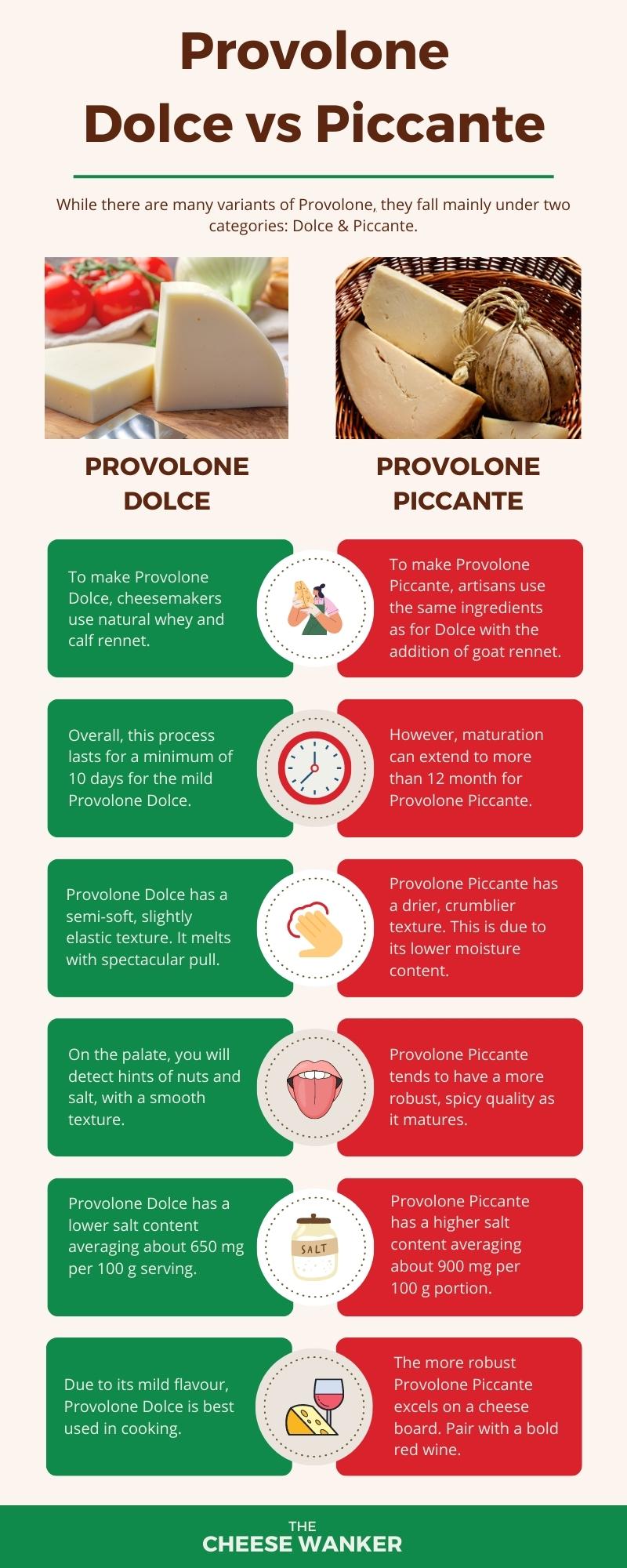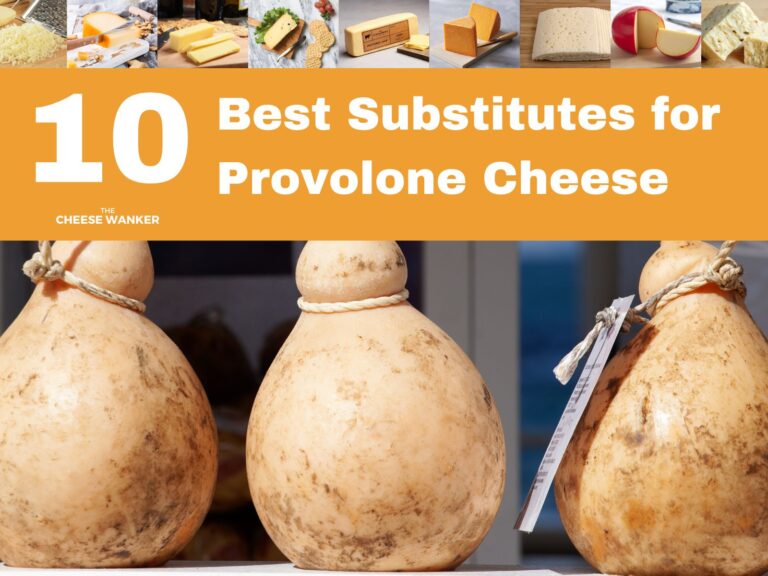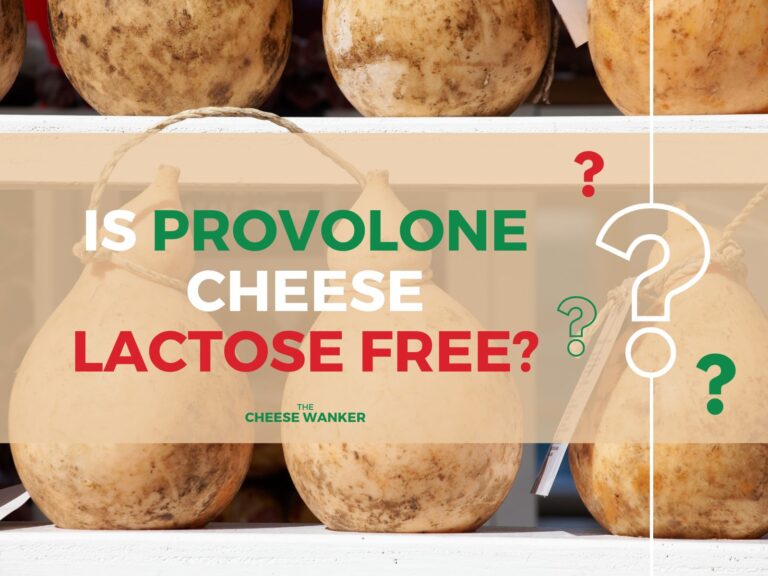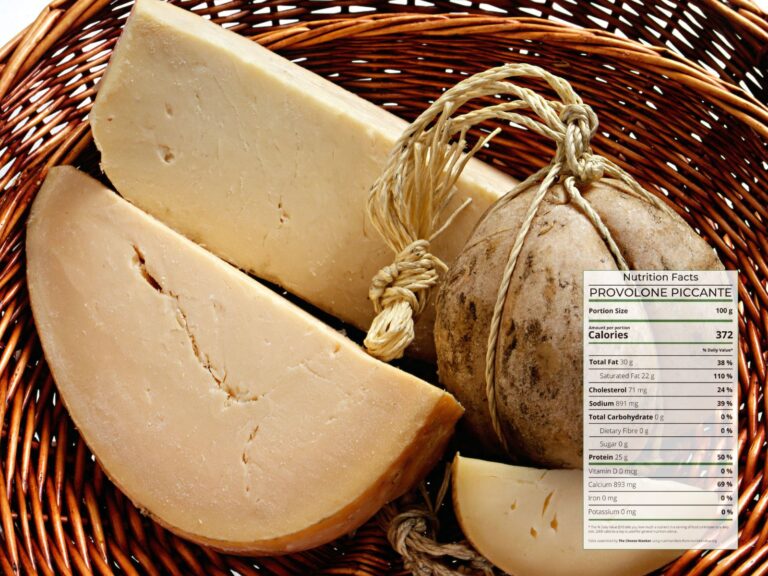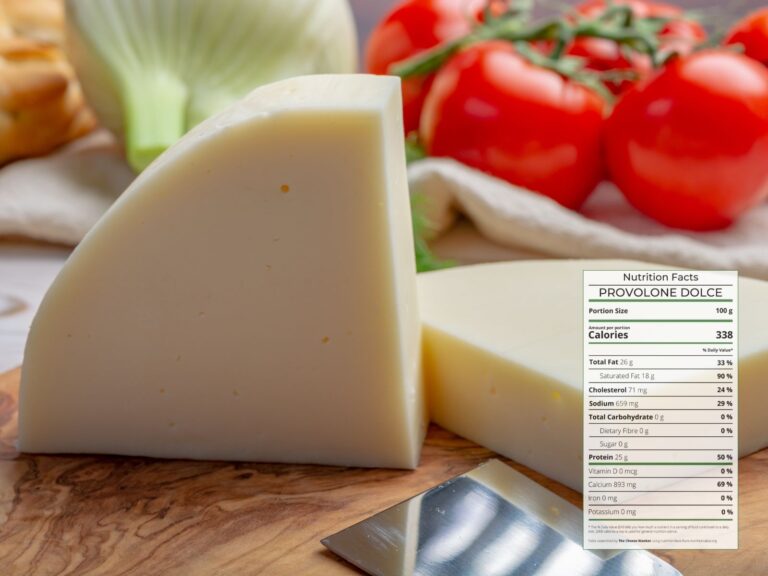Provolone might just be the most versatile of Italian cheeses. Did you know that there are mainly two different types of Provolone? Read on to learn about the difference between Provolone Dolce and Provolone Piccante.
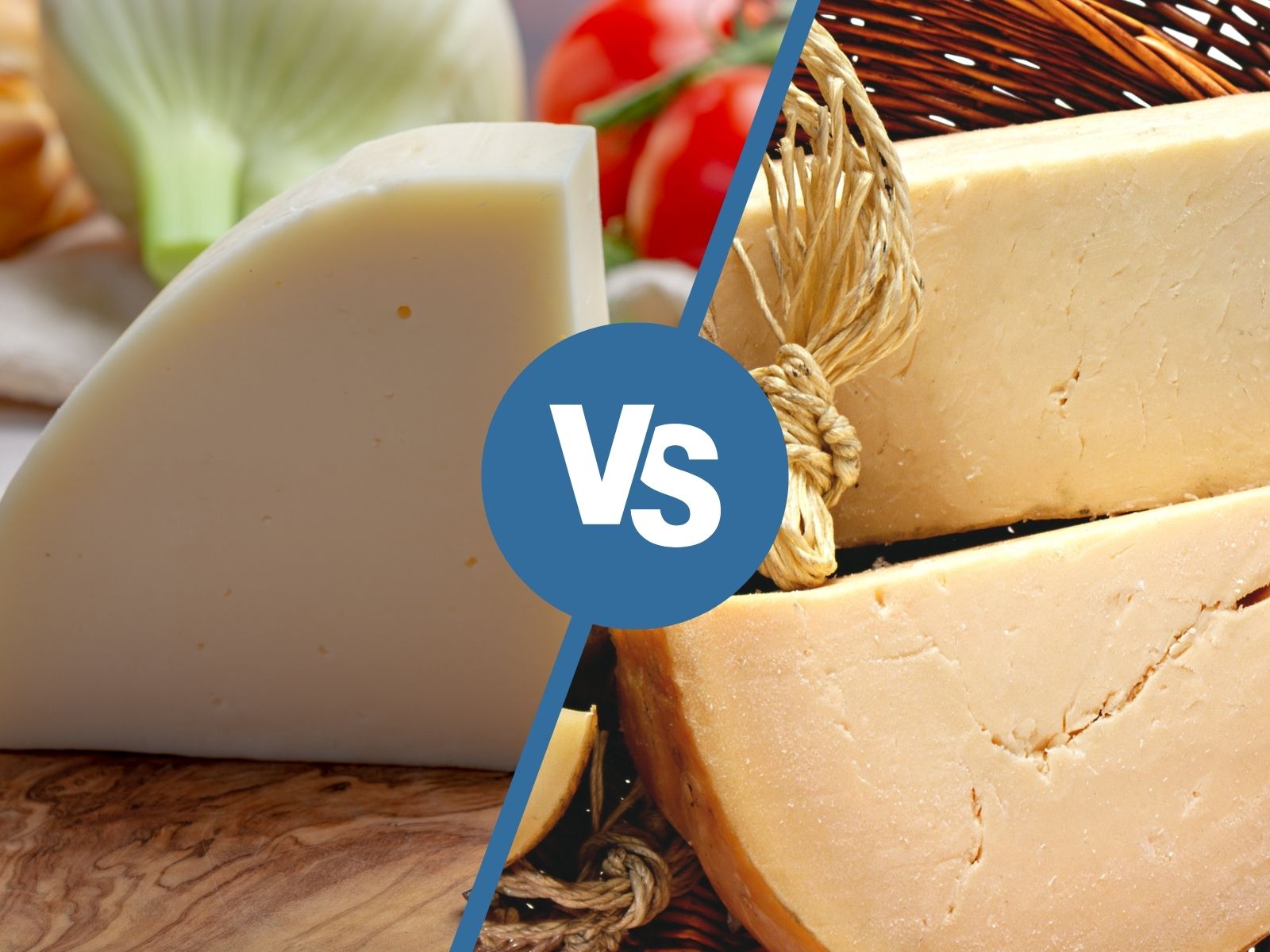
SEE ALSO: The history and origin of Italy’s most versatile cheese, Provolone →
What is Provolone?
Provolone is an aged pasta filata (stretched curd) cheese that finds its roots in the Po Valley of northern Italy. The origins of this Italian cheese date back to Cistercian monks in the territory between the rivers Lambro and Adda.
Presently, the production area for Provolone includes Lombardia, Veneto, Emilia-Romagna and Trento.
While there are many variants of Provolone, they fall mainly under two categories. Firstly, the young and mild cheese is called Provolone Dolce (sweet). Then, there is a more robust version called Provolone Piccante (spicy).
How Provolone Dolce & Piccante are made
To make Provolone Dolce, the cheesemaker adds natural whey and rennet to fresh milk to form the curd. Afterwards, they cut the curd and drain the excess whey. Next, the skilled artisans weave and shape the cheese into a round shape.
Finally, it is brined and cooled before being hung in string to rest and mature.
On the other hand, the production of Provolone Piccante starts in very much the same way. However, the maker use an additional ingredient, goat rennet. As a result, this type of Provolone develops a more pronounced and spicy flavour.
Different maturation periods
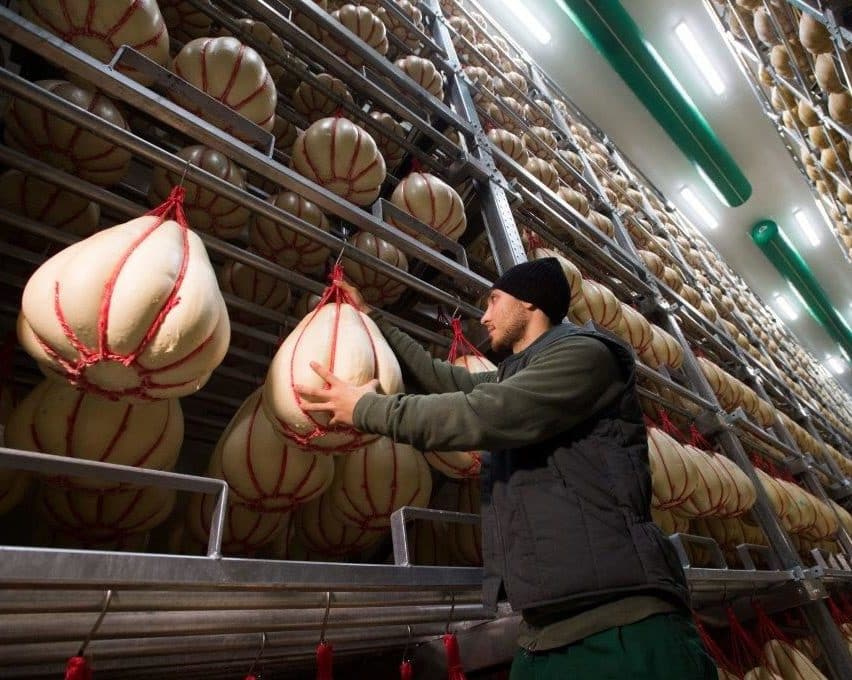
After collecting the young cheese from the maker, an affineur matures the cheese in warehouses with controlled humidity and temperature conditions. During this time, they hang the cheese by a string because it is too soft to place on shelves.
Overall, this process lasts for a minimum of 10 days for the mild Provolone Dolce. However, maturation can extend to more than 12 months for a special type of Provolone Piccante called Stagionato.
Taste & texture: Provolone Dolce vs Piccante
Unsurprisingly, the youngest version of Provolone has the mildest flavour profile. On the palate, you will detect hints of nuts and salt, with a smooth texture.
On the other hand, Provolone Piccante tends to have a more robust, spicy quality as it matures. Moreover, its texture is much firmer than Provolone Dolce due to the lower moisture content.
And finally, Provolone Piccante Stagionato has a crumbly texture with a complex, earthy aroma. Moreover, it has a much more complex, savoury flavour than the two younger versions.
How to serve different types of Provolone
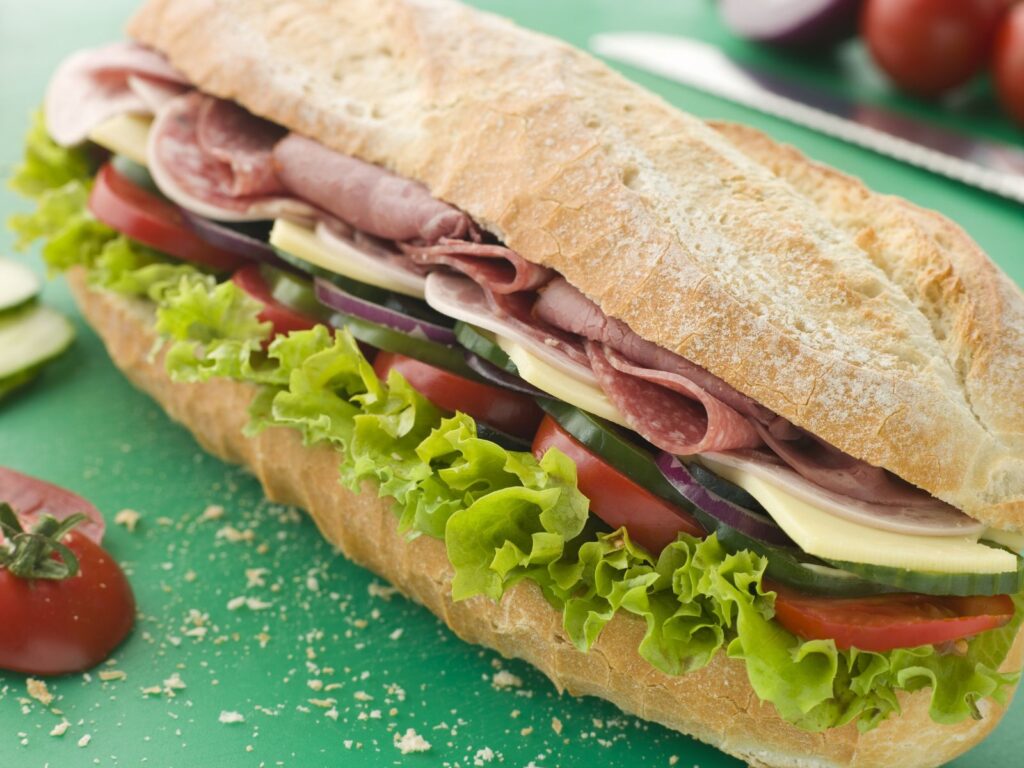
Due to its mild flavour, Provolone Dolce is best used in cooking. As a matter of fact, you can enjoy this versatile cheese fresh in a Philly Hoagie or melted in a Grilled Cheese sandwich.
In contrast, the more robust Provolone Piccante excels on a cheese board. Without a doubt, it pairs exceptionally well with full-bodied wines such as Aglianico, Gattinara and Barbera d’Asti.
Nutritional profile: Dolce vs Piccante
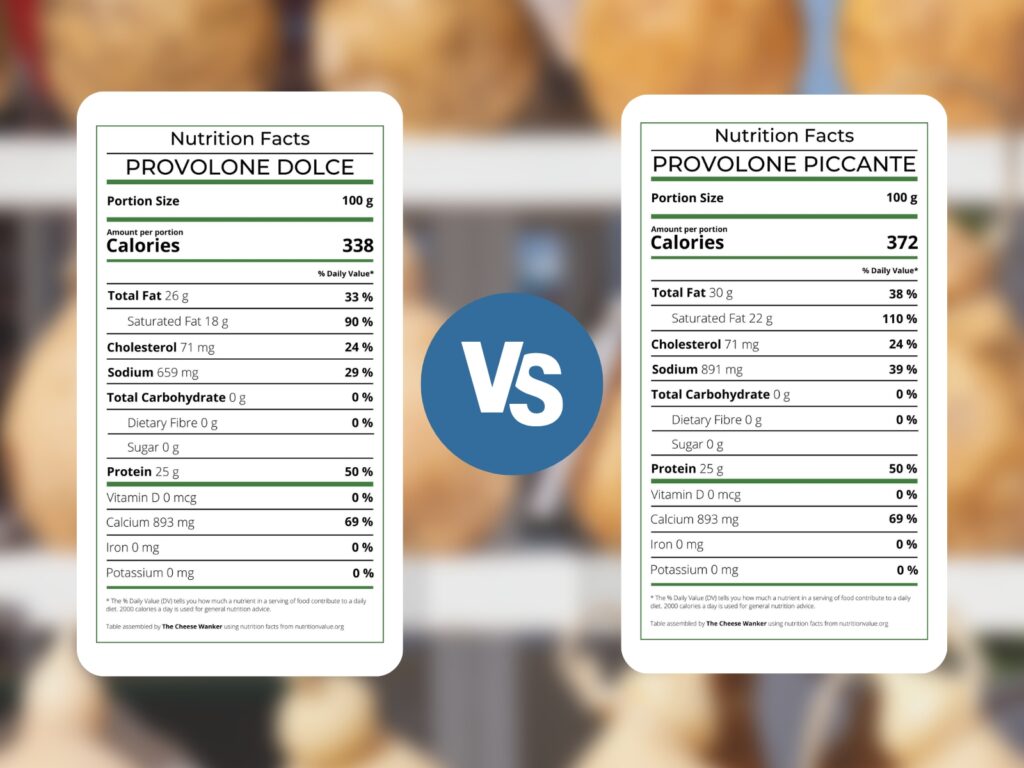
Unsurprisingly, both versions of Provolone have fairly similar nutritional profiles. Indeed, they are both moderately high in fats, cholesterol, protein and calcium.
Moreover, pasteurised versions of all Provolone are safe to consume during pregnancy. And they are usually comfortably digested by people who are lactose intolerant.
One point of difference though is the salt content. Due to its longer ageing process, Provolone Piccante contains significantly more sodium than its younger counterpart.
You can read our complete assessment of the nutrition facts for Provolone Dolce here. And our nutritional review of Provolone Piccante here.
Conclusion
Thank you for reading our post on the differences between Provolone Dolce and Provolone Piccante. As you can see, they are both amazing pasta filata cheeses with variations in rennet, age, texture and flavour. What’s your favourite type of Provolone? Let me know in the comments.
